
Richard Hamming, a former researcher at Bell Labs, once observed that a change of an order of magnitude in quantity causes a change in quality. A racing car that can go 1000 km/hour in the Nevada desert is a fundamentally different machine than a normal car that goes 100 km/hour on a highway. Similarly, a 100-story skyscraper is not just a scaled up 10-story apartment building. So, too, with computers.
| Type | Price | Example Application |
|---|---|---|
| Disposable computer | 1 | Greeting cards |
| Embedded computer | 10 | Watches, toys, appliances |
| Palmtop computer | 100 | Home video games, PDA |
| Personal computer | 1K | Desktop or laptop computer |
| Server or workstation | 10K | Network server, professional use |
| Workstation clusters | 100K | Departmental mini-supercomputers |
| Mainframe computer | 1M | Batch data processing in a bank |
| Supercomputer | 10M | Weather prediction |
Single chips, perhaps glued to the inside of greeting cards, play tunes such as “Happy Birthday” or “Here Comes the Bride”.
A smart card is a credit-card sized plastic card with an embedded computer chip. The chip can either be a microprocessor with internal memory or a memory chip with non-programmable logic. The chip connection is either via direct physical contact or remotely via a contactless electromagnetic interface.

The Active Badge system provides a means of locating individuals within a building by determining the location of their Active Badge. This small device worn by personnel transmits a unique infra-red signal every 10 seconds.
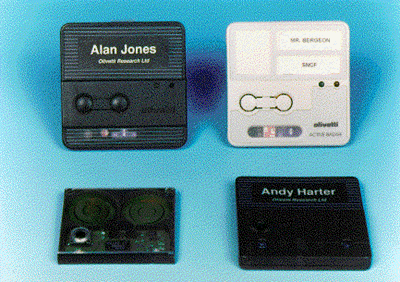

Computers embedded inside telephones, microwave ovens, cameras, CD players, toys, dolls, and a thousand other devices.
Within a few years, almost everything electrical will have a computer in it. The number of embedded computers will be measured in the billons, dwarfing all other computers combined by orders of magnitude. These computers hold a processor, less than a megabyte of memory, and I/O capability.
 | 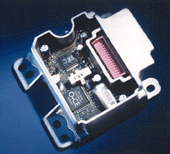 | 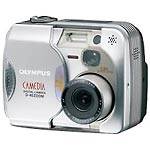 |
| ABS Computer (anti-lock brakes) | Airbag computer | Digital camera |
Computers the size of a credit card, cell-phone, or calculator. Portable digital assistants, limited graphical display.
These systems typically contain a few megabytes of memory, a small display, and a touch sensitive input area or limited keyboard.

Personal computers, including both desktop and notebook devices, that are most associated with the word computer.
Personal computers come with many megabytes of memory, hard disks in the gigabytes, DVD or CD drives, keyboard, pointing devices, full-size display, multimedia, and communication devices.


High-performance computers, often with multiple processors, with gigabytes of memory, terabytes of disk space, and high-speed networking capability.
| The Sun Ultra™ 80 workstation brings multiprocessing power, industry-standard PCI I/O, and dual-UPA graphics capability to the desktop. This next-generation workstation uses the processing power of UltraSPARC™ -II processors, PGX32™ and Sun Elite3D and Expert3D graphics technology, UltraSCSI disks, and the innovative high-performance peripheral component interconnect (PCI) I/O bus. With the tower system enclosure, Sun Ultra 80 workstation provides all the modular and expandable features that users have grown to expect from Sun Workstation™ systems. Sun's commitment to high-performance computing means the Ultra 80 workstation delivers increasing levels of performance and preserves 100 percent binary compatibility with application software. | 
|
Standard workstations connected by advanced networks, and running special software that allow all the machines to work together on a single problem or application.
Included here are “farms” of network servers, graphics rendering machines, and enterprise-support systems.
Clusters scale easily from a handful of machines to thousands of them.

Avalon is a 140 processor Alpha Beowulf cluster constructed entirely from commodity personal computer technology. It is a co-operative venture of the Los Alamos National Laboratory Center for Nonlinear Studies and Theoretical Division.
Room-size computers with massive storage systems, extensive I/O capability, and capable of handing enormous numbers of transactions.
These are the direct descendants of the corporate computing facilities first acquired decades ago. While extremely expensive, they are often kept running because of the enormous investment in software, data, operating procedures, and personnel that they represent.
Mainframes are notorious as the source of the Year 2000 problems caused by COBOL or FORTRAN programs written in the 1960s and 1970s by programmers who never envisioned their software lasting three or four decades.
|
A CMP-based ES7000 contains numerous "cells" to form a powerful, reliable, agile, and cost-effective Intel® mainframe. These cells can be configured flexibly to create a server with:
| Cellular MultiProcessing (CMP) |
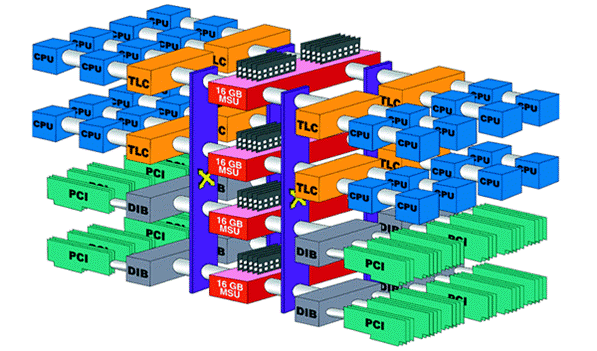
|
Supercomputers have extremely fast CPUs, disks and networks. Typically they are highly parallel machines, similar to workstation clusters, but with faster components and specialized processors.
Supercomputers are used to solve computationally intensive problems in science and engineering, such as modeling climate systems, modeling fluid-flow systems such as aircraft structures, synthesizing new molecules for medical or genetic studies, and simulating large economics systems.
The CRAY SV1 computer system at the Ohio Supercomputer Center (OSC) is a powerful parallel vector processor (PVP) supercomputer that features 16 (500 MHz) vector processors and 32 Gbytes of physical RAM for large memory jobs. Serial jobs, auto-tasked and parallel jobs are scheduled on the 16 single streaming processors (SSP). Four of the SV1 SSP processors can be combined into one multi-streaming processor (MSP). Multi-streaming is a feature that automatically divides loop iterations among the four CPUs. You may get speedup factors of up to four on loops to which this technique can be applied.
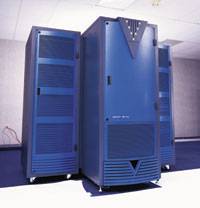
Maintained by John Loomis, last updated Jan 12, 2005